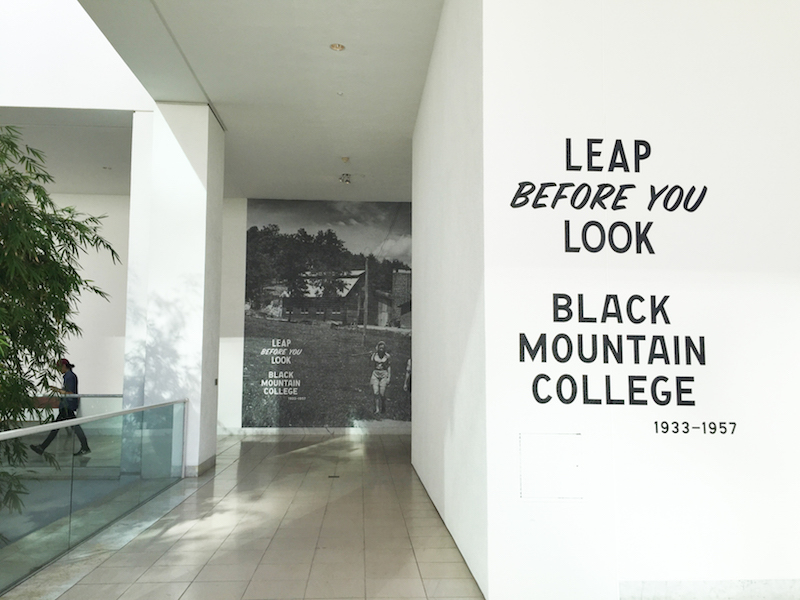 From 1933–57, a small, avant-garde liberal arts school in North Carolina created powerful waves in the art world, with repercussions that continue to impact art practice and arts education to this day. Black Mountain College, located in the bucolic hills near Asheville, was a nexus for an astounding roster of artists, musicians, poets, dancers, and thinkers who came to the school to teach and study. Figures including Anni and Josef Albers, John Cage, Merce Cunningham, Robert Rauschenberg, Elaine and Willem de Kooning, Buckminster Fuller, Ruth Asawa, Robert Motherwell, Gwendolyn and Jacob Lawrence, Cy Twombly, Franz Kline, Charles Olson, and Robert Creeley were associated with the college, and a generous selection of works by them and others are featured now at the Hammer Museum.
From 1933–57, a small, avant-garde liberal arts school in North Carolina created powerful waves in the art world, with repercussions that continue to impact art practice and arts education to this day. Black Mountain College, located in the bucolic hills near Asheville, was a nexus for an astounding roster of artists, musicians, poets, dancers, and thinkers who came to the school to teach and study. Figures including Anni and Josef Albers, John Cage, Merce Cunningham, Robert Rauschenberg, Elaine and Willem de Kooning, Buckminster Fuller, Ruth Asawa, Robert Motherwell, Gwendolyn and Jacob Lawrence, Cy Twombly, Franz Kline, Charles Olson, and Robert Creeley were associated with the college, and a generous selection of works by them and others are featured now at the Hammer Museum.
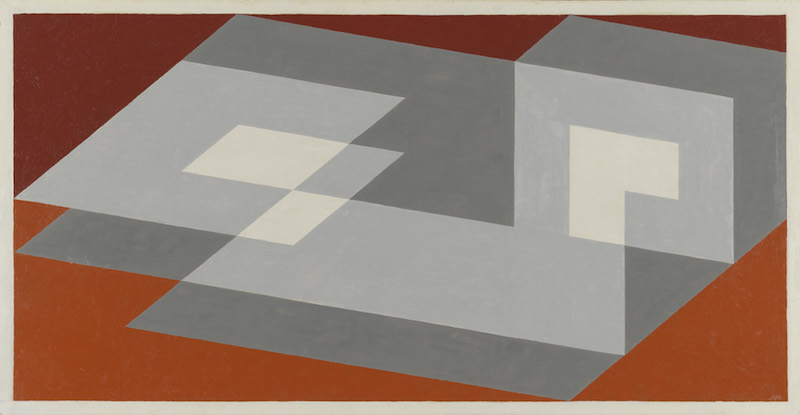 Leap Before You Look: Black Mountain College 1933–1957 is a traveling exhibition that features more than 250 objects by nearly one hundred artists. True to the school’s interdisciplinary curriculum, the exhibition features a wide array of media, including painting, sculpture, drawing, textiles, photographs, ceramics, and more. Here is a quick video trailer of the show to give you a flavor of the artists who launched from BMC. And here is a helpful description of the philosophy of the school. The show is in town through May 15, 2016.
Leap Before You Look: Black Mountain College 1933–1957 is a traveling exhibition that features more than 250 objects by nearly one hundred artists. True to the school’s interdisciplinary curriculum, the exhibition features a wide array of media, including painting, sculpture, drawing, textiles, photographs, ceramics, and more. Here is a quick video trailer of the show to give you a flavor of the artists who launched from BMC. And here is a helpful description of the philosophy of the school. The show is in town through May 15, 2016.
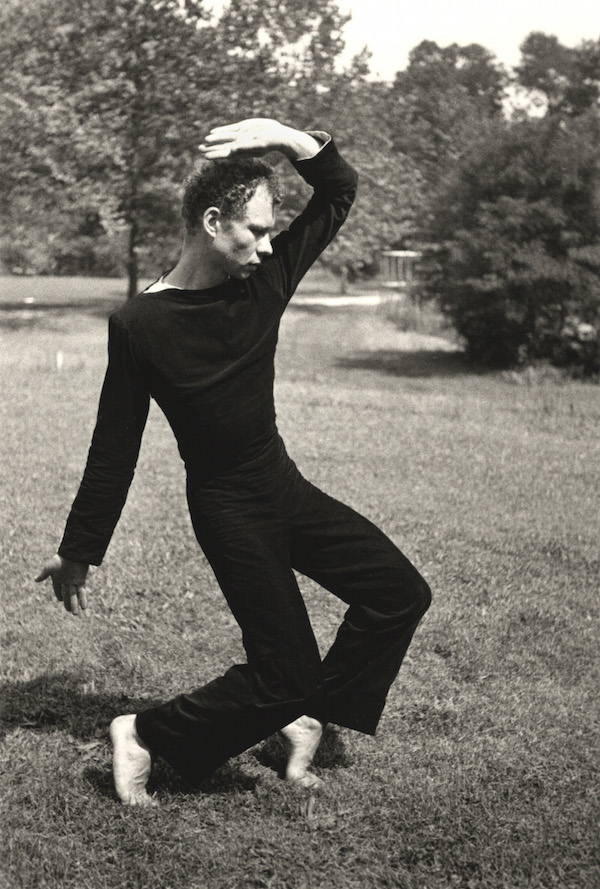
Leap Before You Look follows a loose chronology, beginning with a section that focuses on married artists Anni and Joseph Albers, who came to Black Mountain College from the Bauhaus to escape the Nazi era in Germany. Joseph Albers was the first head of the arts curriculum at the school, and the opening gallery features numerous examples of his and his wife’s paintings, photographs, prints, and weavings.
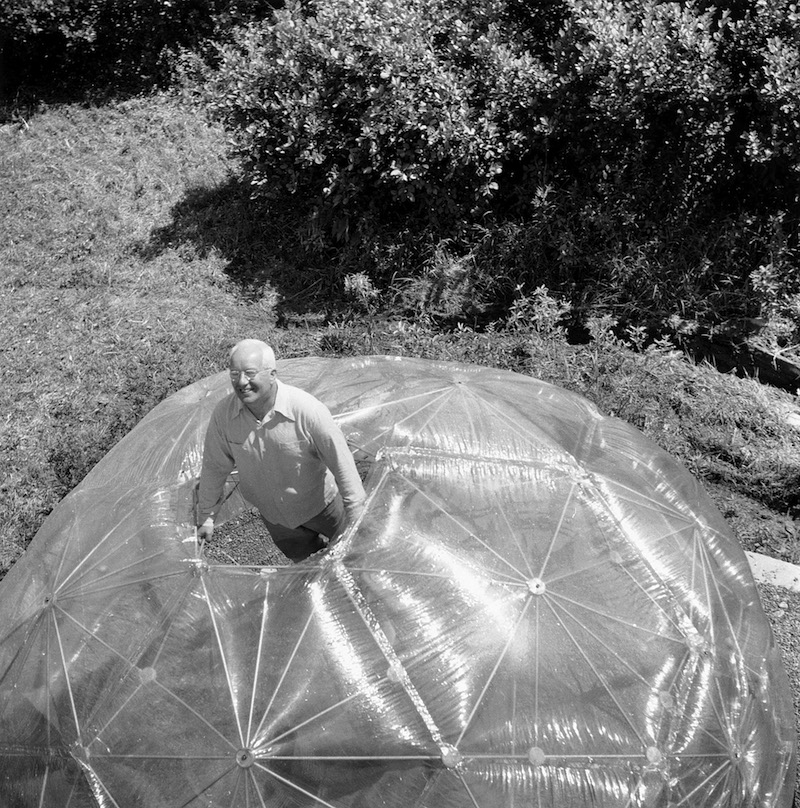
Black Mountain College put hands-on art making and “learning by doing” at the center of their liberal arts curriculum, and this cutting-edge pedagogy is explored in a section titled Teaching and Learning. Here are studies for Buckminster Fuller’s intriguing geodesic domes, which were first erected at Black Mountain College, as well as collaborative projects made with students and teachers, such as jewelry created by Alexander Reed and Anni Albers. The everyday objects used to construct necklaces and other adornments—corks, paper clips, and bobby pins—reflect both budgetary constraints as well as an artistic preference for humble materials.
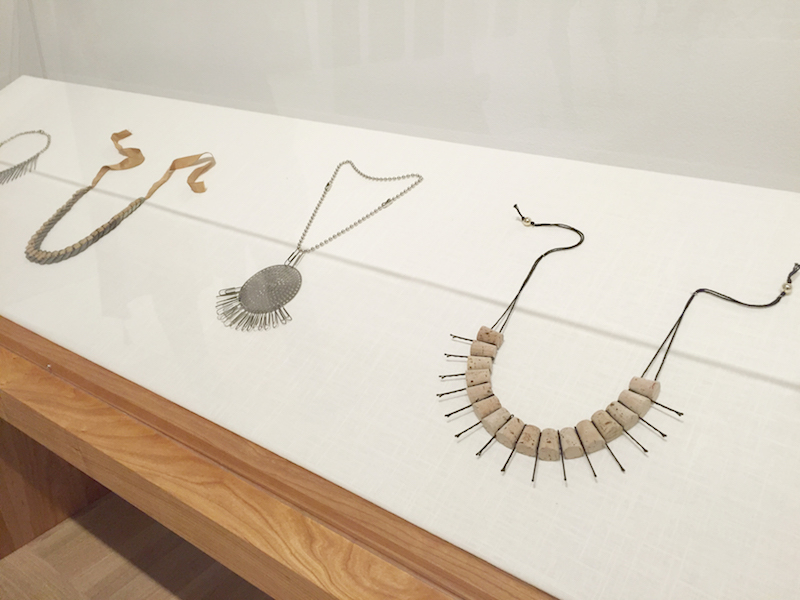
Indeed, this preference for coaxing elegant results from simple materials is further exemplified in Ruth Asawa’s Untitled (S. 272), a crocheted, nine-foot tall copper and wire sculpture that hangs from the ceiling. Asawa studied at Black Mountain College under Joseph Albers, who encouraged her to experiment with common materials to create uncommon results. It’s a great message to reinforce for budding, young artists!
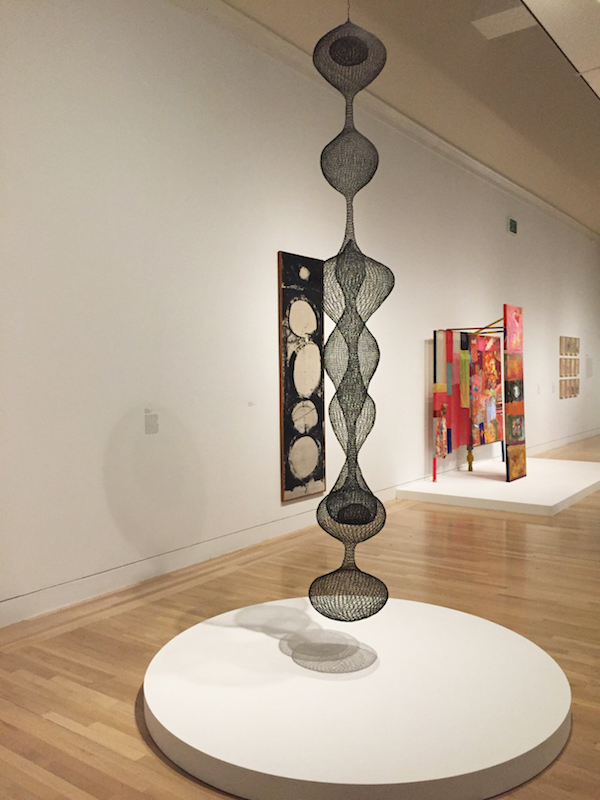
This spirit of experimentation extended throughout the school’s entire arts curriculum. Other sections of the exhibition explore dance, music, and poetry. In keeping with the spirit of the Black Mountain College and the inspiring projects that arose there, the exhibition includes a sprung dance floor for live, in-gallery performances and a robust slate of upcoming lectures, screening, workshops, and readings.
The exhibition design does an admirable job of evoking the dynamism of the time and place. Large, black-and-white photomurals show students working the land at the college—helping with maintenance and chores was a requirement—and lounging lakeside.
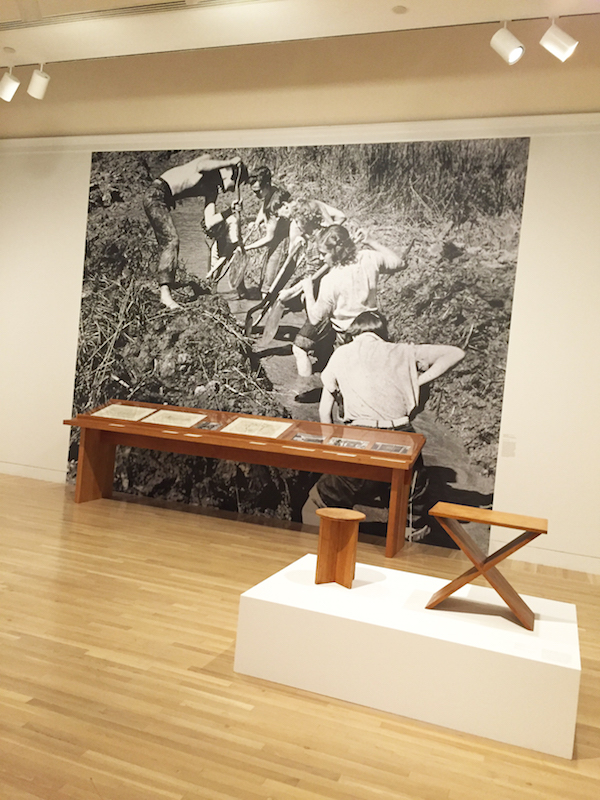
Teens might be especially drawn to the exhibition by reading the book The Longest Ride by Nicholas Sparks, and/or seeing the 2015 film adapted from it. Though the film centers on a love story between a professional bull rider and a Wake Forest College student, Black Mountain College plays a pivotal role when the young couple befriend an older man who reminisces about his own life, beloved wife, and her deep connection to the art that was made at the college.
EVENTS related to the show:
Friday–Sunday, March 18, 19, and 20
12 p.m. and 2 p.m. each day
Former Cunningham dancer Silas Riener performs the newly reconstructed work Changeling, an early Merce Cunningham solo choreographed using chance procedures, to Christian Wolff’s score for prepared piano, Suite. Dancer and choreographer Polly Motley performs Glyph, a whimsical work choreographed by dancer and teacher Katherine Litz at Black Mountain College in 1951, to Lou Harrison’s score The Glyph. Pianist Aron Kallay and percussionist Yuri Inoo.
Friday–Sunday, April 15, 16, and 17
Friday–Sunday, April 22, 23*, and 24
12 p.m. and 2 p.m. each day (*12 p.m. and 1 p.m.)
Former Cunningham dancer Silas Riener performs the newly reconstructed work Changeling, an early Merce Cunningham solo choreographed using chance procedures, to Christian Wolff’s score for prepared piano, Suite. Dancers from L.A. Dance Project will perform excerpts from Springweather and People (1955), Suite for Five (1956), Changeling (1957), and other early work by Merce Cunningham. Music by Christian Wolff and John Cage is performed by pianist Aron Kallay.
Younger children (ages five and up) can experiment with textile art on Sunday, April 17 from 11 am until 1 pm during Close Up: Fiber-Fest. Artist Krysten Cunningham will lead art-making activities inspired by the textiles on display in Leap Before You Look.
The Hammer Museum is open Tuesday-Friday 11 am–8 pm; Saturday and Sunday, 11 am–5 pm. Admission is free.
Hammer Museum // 10899 Wilshire Boulevard //Los Angeles CA 90024
310/443-7000
Written by Stacey Ravel Abarbanel

